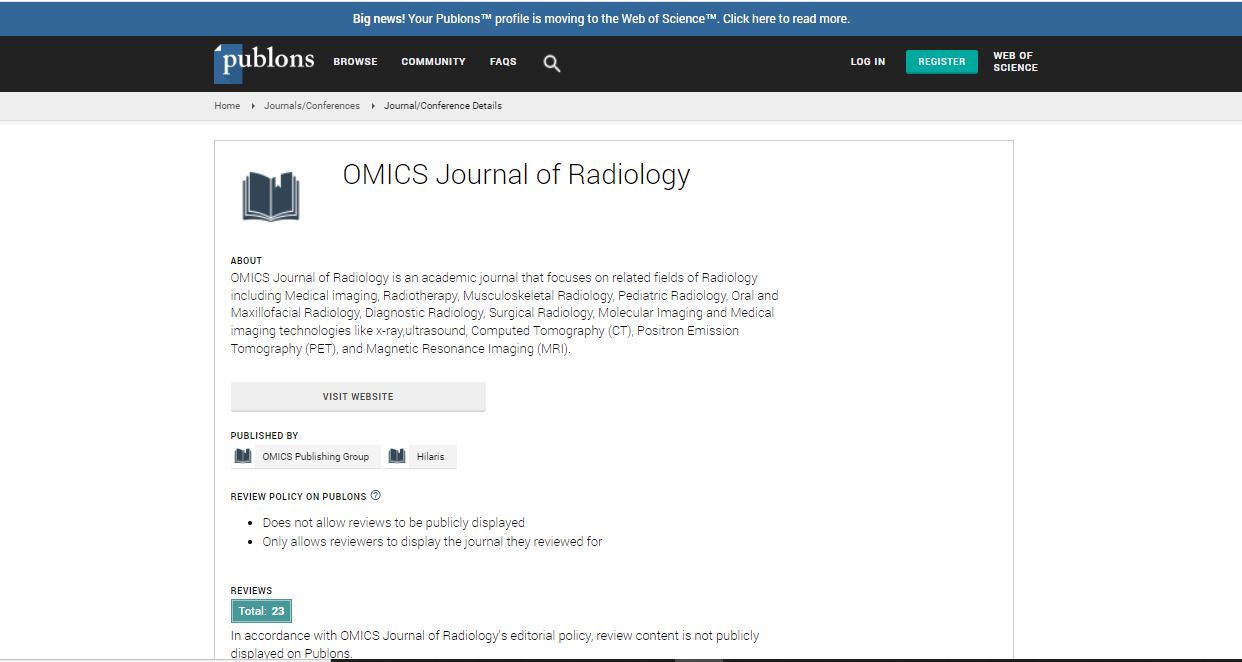Research Article
Hybrid Iterative Reconstruction Algorithm Improves Image Quality and Helps to Decrease Radiation Dose in 256-Slides Craniocervical CTA
| Bhoj Raj Sharma* | |
| Norman Bethune College of Medicine, Changchun, Jilin 130041, China | |
| Corresponding Author : | Bhoj Raj Sharma Norman Bethune College of Medicine Changchun, Jilin 130041, China Tel: +8615526653212 E-mail: bhojrajsharma2@gmail.com |
| Received October 29, 2014; Accepted November 13, 2014; Published November 19, 2014 | |
| Citation: Sharma BR (2014) Hybrid Iterative Reconstruction Algorithm Improves Image Quality and Helps to Decrease Radiation Dose in 256-Slides Craniocervical CTA. OMICS J Radiol 3:171. doi: 10.4172/2167-7964.1000171 | |
| Copyright: © 2014 Sharma BR. This is an open-access article distributed under the terms of the Creative Commons Attribution License, which permits unrestricted use, distribution, and reproduction in any medium, provided the original author and source are credited. | |
Abstract
Purpose: The purpose of this study is to prospectively compare the image quality and radiation dose in two different 256- slice MDCT using Filter Back Projection and iDose4 (Hybrid iterative reconstruction) algorithm craniocervical CT angiography.
Materials and methods: Thirty patients were randomly assigned into two groups (Group A and B), each comprising 15 patients. All patients underwent craniocervical CTA examination. Group A (10 men, 5 women; mean age 57.13 ± 11.27; age range 41-73 years) and Group B (9 men, 6 women; mean age 58.80 ± 12.55; age range 41-76 years) received different amount of X-ray tube potential and tube current and underwent on two different version of reconstruction algorithm. Then two blinded radiologist analyzed image quality of craniocervical CTA independently. They performed the subjective image quality and objective image quality assessment. The Effective Radiation Dose (ED) was calculated using CT dose volume Index (CTDIvol.), Dose-Length Product (DLP) and conversion coefficient for chest (conversion factor k=0.014 mSv mGy-1cm-1). We used chi-square test, and Maan-Whitney U test for non-parametric independent t test for subjective evaluation of image quality and to assess inter-observer reproducibility of the image quality by the subjective method between two observers, we used the interclass correlation test.
Result: The quantitative image quality of iterative reconstruction algorithm was significant compared to FBP. The mean image noise in group B was 0.51 times lesser than group A (P-value <0.001).The mean image scores in both the groups by radiologist 1 and radiologist 2 was (3.65 ± 0.48 vs. 3.33 ± 0.63 respectively, p=0.002) and (3.73 ± 0.45 vs. 3.40 ± 0.69 respectively, p=0.002). The radiation dose was found to be reduced by 55% in group B compared to group A (P<0.0001) in craniocervical CTA.
Conclusion: Hybrid Iterative Reconstruction (HIR) Algorithm significantly improves the image quality in craniocervical CT, as well as helps to lower the radiation dose while maintaining the image quality.

 Spanish
Spanish  Chinese
Chinese  Russian
Russian  German
German  French
French  Japanese
Japanese  Portuguese
Portuguese  Hindi
Hindi 
